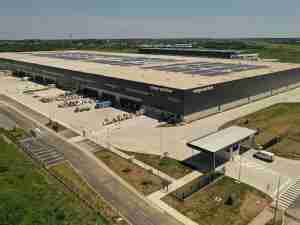In my previous article, 'What is Trade Data', I talked about what types of trade data exist and what types of information can be found using different datasets. There are two main types of trade data from the United States government:
- US Census Data- Provides HTS (Harmonized Tariff System) level information for the total amount of products import and exported.
- US Customs Data- Provides data from US Customs' Automated Manifest System on the details for each container imported into the United States at the shipment level.
Both types of data contain useful information and can help importers and exporters learn more about their markets. How to use the information is a more complicated question because many companies use the data in different ways. If you are considering adding trade data to the decision making process at your company, it is important to understand both the general uses of the information and how it can be used to answer specific questions.
WHAT QUESTIONS CAN TRADE DATA ANSWER?
Regardless of an organization's role within the international trade arena (manufacturer, distributor, retailer, law firm, transportation service provider, etc.), there are many different types of questions that trade data can help answer.
- What is the total amount in dollars and weight of a product or class of products being imported and exported?
- Where does the trade balance lie between the US and other countries?
- Who is providing competitors with their products and raw materials?
- What does a particular company in China produce and who are they shipping that product to?
- Are products being counterfeited and how are the counterfeiters getting the goods into the United States?
- What country produces the most of a product and who are the largest US importers?
- Who are the top importers located in a specific geographic area?
- What are the top exporting countries to the United States for a particular product?
The answers to these types of questions may come in aggregate form (US Census data) or be incredibly detailed (US Customs data). Trade data ensures that organizations have the information needed to be aware of their ever changing marketplaces.
GENERAL USES OF TRADE DATA
Trade data provides much of the fundamental information global organizations need to effectively and efficiently complete their market intelligence efforts. There are many ways that companies take data provided by US Census and US Customs data providers and turn it into actionable, value based initiatives.
Market Analysis- Companies cost effectively develop market evaluations and explore new market opportunities by examining both detailed and aggregate information. Great insights about the impacts of future scenarios lead to more accurate forecasting and strategic planning. Market share analysis can be performed by examining the total imports for specific companies using US Customs data and comparing it to the totals for products in US Census data.
Competitive Intelligence- Organizations use US Customs data to expand and protect their revenue bases by anticipating and reacting to competitive tactics and strategies. They can gain insights into competitors' supply strategies, preempt new initiatives, and uncover potential opportunities and threats. US Census data can be applied if it is known that a company is the sole importer/exporter of a product from or to a specific country to determine the costs/prices of their imports/exports.
Lead Prospecting- Companies who sell products and services to the international trade community reduce sales expenses and drive revenue by developing new leads and gaining insights into existing prospects with the uniquely detailed, targeted US Customs dataset.
Supplier Sourcing- Manufacturers reduce supply chain development costs by finding what countr





_-_28de80_-_d88095865f9f1cbb4ecdd37edf61c63efd603428_lqip.png)

